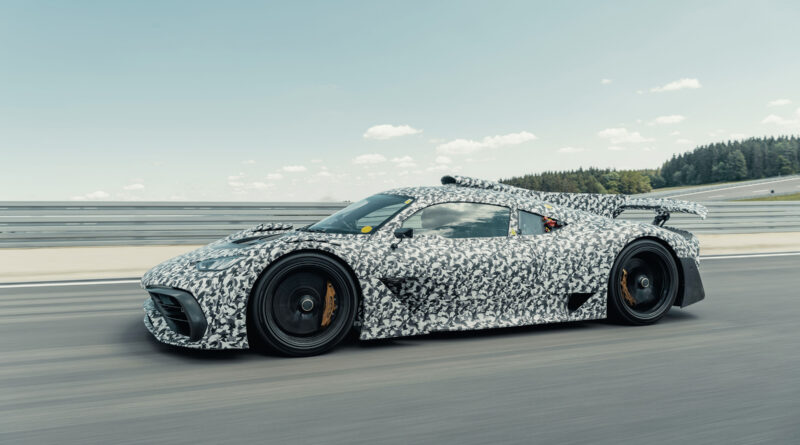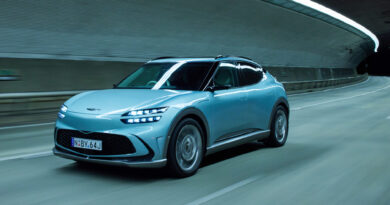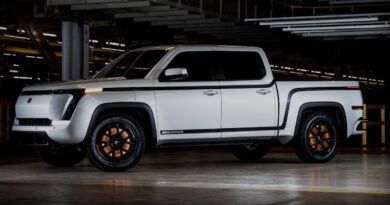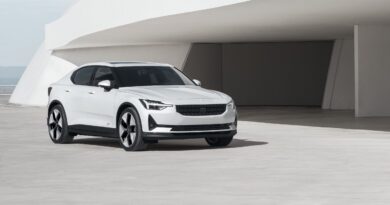Hybrid hypercar powers up: Mercedes-Benz’s road-going F1 car heads for the track
The F1 car for the road is getting closer to reality.
Mercedes-Benz’s plug-in hybrid hypercar with Formula 1 DNA is about to hit the unofficial fast car test track: Germany’s Nurburgring.
Despite being delayed by two years due to immense challenges engineering its F1 engine for road use, the pinnacle of Mercedes-Benz performance has begun track testing.
A handful of prototypes wearing thinly veiled black and white disguises have begun hot lapping Benz’s proving ground at Immendingen in the south of Germany.
The Mercedes-AMG Project One will also soon tackle some lap records at the infamous 21km stretch of road in Germany that is used as the benchmark for performance machines.
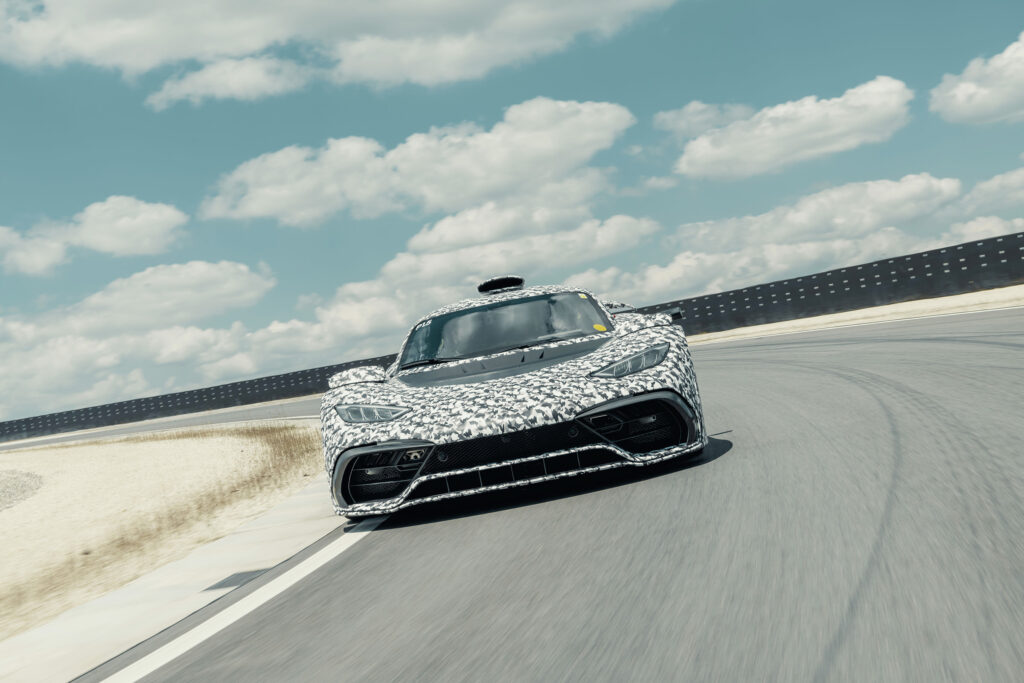
The numbers it logs will be watched intently not only by enthusiasts and soon-to-be owners but also rivals set to release hybrid competitor machines; Aston Martin is the most obvious with its upcoming Valkyrie hybrid hypercar.
Engineering challenges
In announcing the next phase of development in the $5 million-plus Project One’s development, Mercedes-Benz conceded the car “represented a tremendous challenge” and that the “development team ventured into uncharted territory with this project”.
Mercedes-Benz says dynamic testing will be used to improve how the car drives but that one big focus is ensuring the active aerodynamics provide genuine benefits.
“The complex interplay between the various active components such as the louvres, the air outlets in the front fenders or the large rear aerofoil is now confirming its effectiveness even outside the wind tunnel as a means of delivering the car’s exceptional lateral dynamics,” the company said in a statement.
F1 engine, high tech electric motors
The Project One uses the same 1.6-litre V6 turbo engine used in the dominant and championship-defending Mercedes-AMG F1 cars.
However, the engine has been detuned to improve reliability on the road. Whereas the race engines rev to 15,000rpm, the Project One engine will be limited to 11,000rpm.
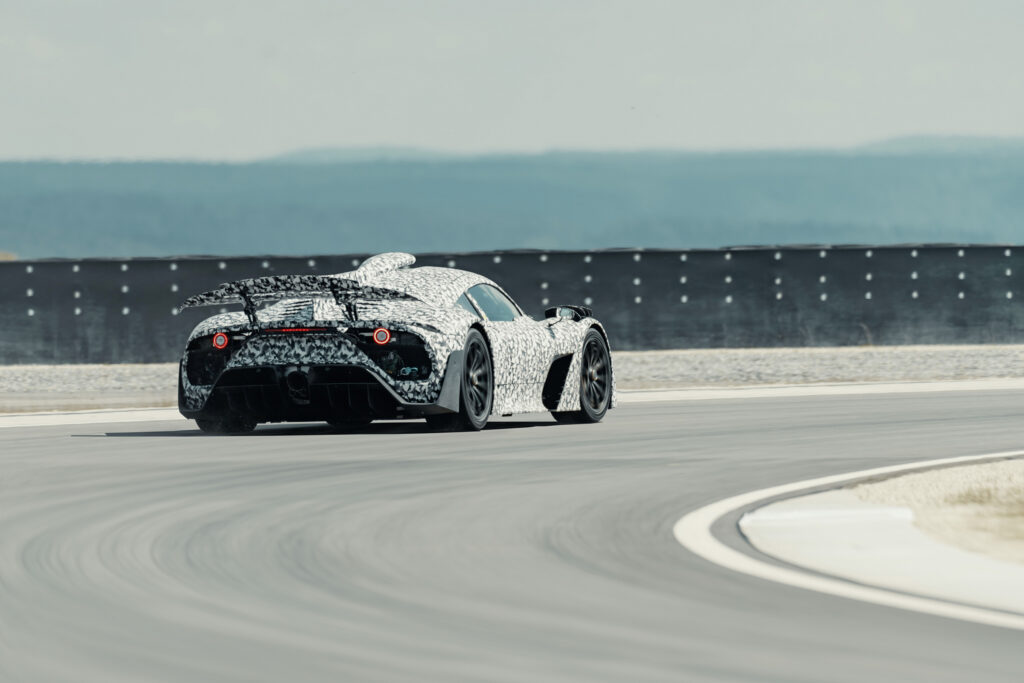
It uses an innovative split turbo that places the turbine and the compressor much further apart than they usually are; it allows for better heat management in the engine by keeping intake and exhaust components further apart. The turbo can also be driven by an electric motor to boost performance at low engine revs.
The Project One also has two electric motors driving each of the front wheels, something that provides more torque, more outright power and electric-only driving capability.
But they’re not regular electric motors.
Each provides 120kW and can rev at up to 50,000rpm, much higher than the 15,000-20,000rpm of most EV motors.
The batteries in the Project One are identical to those in the Merc F1 machine, part of an 800V electrical system.
However there are more of them to provide a 25km electric driving range.
Combined output is claimed to be more than 735kW, or almost 1000 horsepower in the old money. That makes the Project One about as powerful as the Mercedes F1 machines.
The Project One is claimed to top 200km/h in less than six seconds, making it faster than the ballistic Ferrari SF90 Stradale (6.4 seconds for the same dash).
Project One coming to Australia
Mercedes-Benz has committed to produce only 275 Project Ones and all already have customer names against them.
Eight of those are earmarked for Australian buyers.
Priced from 2.275 million Euros, ($3.8 million) the Project One has already increased by a few hundred grand since it was announced in 2017 – and all due to exchange rates.
Luxury car tax will add more than $1 million, while GST tops another $300,000 and import duty around $150,000. Then there are state taxes, which will add upwards of $50,000.
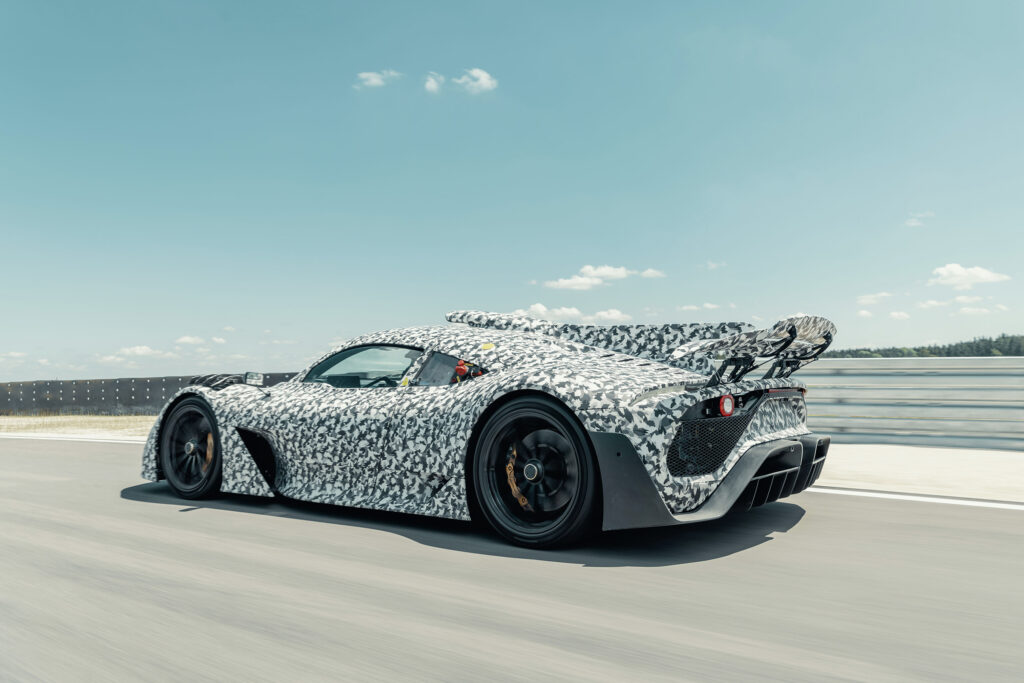
Short story is the Project One will likely cost more than $5.5 million to land in Australia.
Running costs are also expected to be high.
While it uses a hybrid system, the electric motors are more about performance than hugging trees.
Utilise that full 735kW and most of it will be coming from the petrol engine, so you can be guaranteed of some decent fuel bills.
Then there’s the full engine rebuild that’s required every 50,000km.
Ah, the joys of owning an F1 car for the road…

